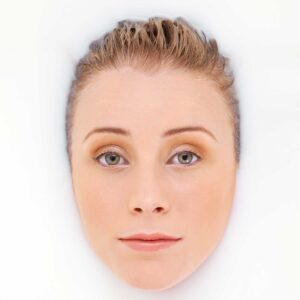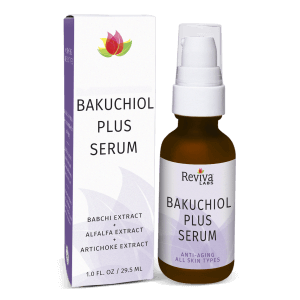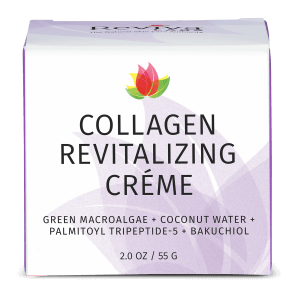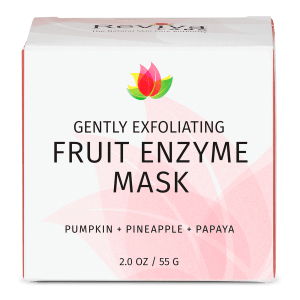Natural, Reviva Labs, Skin Care
The Emergence of Calming Skincare: A Soothing Revolution
In the realm of beauty and skincare, the trend du jour is all about calming, soothing, and healing our skin. Those who struggle with reactive skin conditions like eczema or psoriasis are all too familiar with these concepts, but the formulations that are hitting the market now could be a revelation. This article explores the rise of calming skincare and how it can help restore and maintain a healthy skin barrier.
The Advent of Calming Skincare
The inclination towards calming skincare is a welcome development for those grappling with sensitive skin conditions. With many of us becoming our own skincare experts during the pandemic, there was a rush towards active ingredients that promised to improve our skin. Regrettably, the reality was that our skin barriers couldn’t handle the onslaught.
According to dermatologist Dr. Justine Hextall, this is a key reason why calming formulas are gaining popularity. “Consumers have been reading about, and searching for, specific ingredients that will essentially repair photo damage, and there was a focus on retinols, skin peels, and brightening skin ingredients,” she explains2.
However, hydrating and calming ingredients were often overlooked, leading to disappointment when skin regimes didn’t deliver instant results. Now, the focus is shifting towards gentler, more soothing skincare routines.
The Pitfalls of Overdoing Actives
The temptation to layer on different products in the hope of achieving perfect skin can be hard to resist, but it can lead to skin problems. Symptoms such as dryness, redness, flakiness, and breakouts can all signal an impaired skin barrier. Rather than our skin simply acting out, these could be the result of an unbalanced skincare regime.
The Psychological Impact of Skincare
Alongside its physical benefits, a consistent skincare routine can also have a profound impact on our mental health. A study by skincare brand Rodan + Fields found that a three-step skincare routine could dramatically reduce stress levels and boost confidence. The study involved 30 acne-prone women who followed a skincare regime twice a day for eight weeks. The results revealed a remarkable 83% decrease in the stress hormone cortisol, and a significant increase in confidence1.
The Power of Appearance on Mood
Dr. Tim Falla, the chief scientific officer of the study, emphasises the significant connection between an individual’s skin health and their mental health. He states, “There is also a growing body of scientific evidence connecting an individual’s skin health with their mental health, including both emotional wellbeing and stress levels.”
Dr. Rodan and Dr. Fields concur, pointing out the strong correlation between acne lesions and self-confidence. They believe that improving acne-prone skin can reduce stress levels and increase self-confidence. This correlation can also apply to other skin types, suggesting that a regular three-step skincare routine could be beneficial for everyone.
The Value of a Simpler Routine
While the beauty world is brimming with antioxidants, AHAs, and a plethora of serums, Dr. Falla believes that a simpler routine is the key to reducing stress levels and achieving clearer skin. He suggests a three- or four-point plan that includes the right ingredients, in the right formulations, and in the correct order. He advises against mixing certain ingredients in the same product as they may not work well together.
The Effects of Social Media on Skincare
In the era of social media, where perfect skin is a hashtag away, the pressure to achieve a flawless complexion can be overwhelming. Ironically, the more we stress about our skin, the more problematic it can become. This is because our body responds to stress by releasing chemicals that cause inflammation.
Dr. Galyna Selezneva, a psychiatrist and a member of The Royal College of Psychiatry, believes that everyday routines and small acts of self-care can help alleviate this stress. She says, “It’s no wonder that skincare routines have proven to be such a popular and positive factor – they allow people to feel in control of their daily life, which is always calming and reassuring.”
The Rewards of a Skincare Routine
Dr. Galyna explains that there’s a sense of accomplishment we feel when we do our skincare routines ourselves. She says, “It’s very rewarding to feel accomplished and love your reflection in the mirror.” She adds that routines and habits are key during uncertain times for relaxation.
The Role of Hydration in Skincare
A key aspect of all skincare routines, especially in dryer months, is hydration. Layering on hydrating ingredients like hyaluronic acid, which draws water into your skin, and ceramides that lock in moisture, can help maintain a healthy skin barrier. Always remember to finish your routine with sunscreen to protect your skin from harmful environmental factors.
Tips for Incorporating Calming Skincare into Your Routine
Dr. Alek Nikolic provides some helpful tips on how to incorporate the calming skincare trend into your daily routine. First, he suggests not overdoing exfoliation as it can weaken the skin barrier. He recommends exfoliating no more than twice a week and alternating nights if you’re using both retinol and chemical exfoliants in your skincare routine.
Secondly, he stresses the importance of hydration. Layer on hydrating ingredients and top it off with sunscreen to protect your skin.
Finally, he advises against using harsh cleansers that can strip your skin of its natural oils. Instead, opt for a creamy, non-foaming cleanser that gently removes dirt and make-up while providing hydration benefits.
Embracing the Calming Skincare Trend
The shift towards calming skincare represents an evolution in our understanding of skincare needs. By focusing on soothing, hydrating, and repairing our skin, we can achieve a healthier and more resilient skin barrier. So, whether you have sensitive skin or are just looking to simplify your skincare routine, it’s time to embrace the calming skincare trend.
Related Reading












